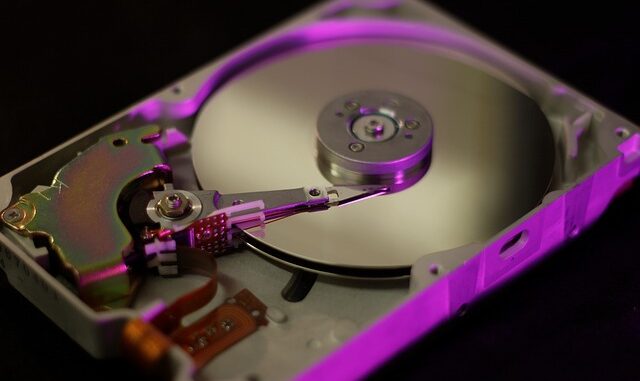
Summary
This article provides six effective strategies for backing up your data, including using external drives, cloud storage, online backup services, and NAS devices. It emphasizes the 3-2-1 backup rule for enhanced data protection and offers practical advice for creating a robust backup system. By following these strategies, you can effectively safeguard your valuable data against loss or damage.
Protect your data with the self-healing storage solution that technical experts trust.
** Main Story**
Safeguarding Your Data: Backup Strategies That Work
In today’s digital world, data is invaluable. Losing it can be devastating, disrupting personal lives and crippling businesses. Protecting your data isn’t just a good idea; it’s a necessity. This article guides you through six effective strategies for backing up your data, ensuring its safety and availability. We’ll also explore the 3-2-1 backup rule, a gold standard for data protection.
Six Effective Data Backup Strategies
-
External Hard Drives: These portable devices offer a simple and cost-effective way to back up large amounts of data. You can choose between HDDs (Hard Disk Drives), which are more affordable and offer higher storage capacities, and SSDs (Solid State Drives), which are faster and more durable but come at a higher price. Connect the drive to your computer, select the files or folders you want to back up, and copy them to the external drive.
-
USB Flash Drives: While smaller in capacity than external hard drives, USB flash drives are incredibly portable, making them ideal for backing up essential files that you need to access on the go. They are perfect for storing crucial documents, presentations, or small projects. Simply copy your important files to the flash drive and keep it in a safe place.
-
Optical Media (CDs and DVDs): Although less common now, optical media like CDs and DVDs still offer a reliable way to store data backups. They are inexpensive and provide a physical, offline backup solution. Burn your files to a CD or DVD using your computer’s built-in or third-party software.
-
Cloud Storage: Cloud storage services, such as Google Drive, Dropbox, and iCloud, provide an offsite backup solution that protects your data from physical damage or theft. These services offer various storage plans, allowing you to choose the one that best suits your needs. Upload your files to your cloud storage account, and they will be accessible from any device with an internet connection.
-
Online Backup Services: Dedicated online backup services offer more advanced features than basic cloud storage, such as automated backups, versioning, and encryption. These services automatically back up your data according to a schedule you set, ensuring that your backups are always up-to-date. They also keep multiple versions of your files, allowing you to restore previous versions if necessary. Encryption protects your data from unauthorized access.
-
Network Attached Storage (NAS): NAS devices are essentially hard drives connected to your network, providing centralized storage and backup for multiple computers. They offer greater storage capacity than most external hard drives and allow for easy file sharing among devices on your network. Set up the NAS device on your network and configure it to automatically back up your computers.
The 3-2-1 Backup Rule: Your Data Protection Failsafe
The 3-2-1 backup rule is a best practice for ensuring data safety. It entails:
- 3 copies of your data: This redundancy protects you from hardware failures or accidental deletions.
- 2 different storage types: Diversifying your storage media (e.g., external hard drive and cloud storage) safeguards against a single point of failure.
- 1 offsite copy: Storing a backup in a separate location protects your data from physical disasters like fire or theft.
By following the 3-2-1 rule and utilizing the strategies outlined above, you can build a robust backup system that provides peace of mind knowing that your valuable data is safe and recoverable. Remember to regularly test your backups to ensure they are working correctly and that you can restore your data when needed. In the unfortunate event of data loss, having reliable backups can be a lifesaver.


So, if I’m burning my files to a CD, should I also invest in a time machine in case my computer spontaneously develops a craving for 90s technology?
That’s a funny thought! While CDs are still an option, you’re right, tech has moved on. It highlights the need to review your backup methods regularly. Are your current solutions still effective and accessible with your existing technology?
Editor: StorageTech.News
Thank you to our Sponsor Esdebe
Optical media, you say? So, if I back up my data on a CD and bury it in the backyard, is that considered my “offsite” copy fulfilling the 3-2-1 rule? Asking for a friend who really likes digging.
That’s a creative take on offsite backup! While burying a CD might technically meet the location criteria, humidity and time may not be your friend. Perhaps a safety deposit box for the CD and a metal detector for your friend?
Editor: StorageTech.News
Thank you to our Sponsor Esdebe
The article’s emphasis on the 3-2-1 rule is vital. How do you determine the “separate location” for your offsite copy? Does a geographically different cloud server suffice, or is physically transporting media still a more secure option for critical data?